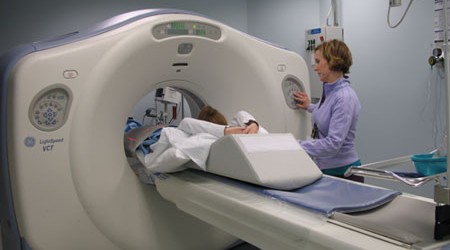The original article can be found on: Medwire News By Helen Albert
MedWire News: Care should be taken to appropriately justify and optimize pediatric computed tomography (CT) scanning, say experts.
“When not clinically indicated, not performing a CT examination is certainly the best radiation dose-reduction strategy,” commented study author Mannudeep Kalra (Harvard Medical School, Boston, Massachusetts, USA) in a press statement.
“However, when a CT scan is indicated, there are steps that can be taken to optimize the dose that children receive. It’s important that all imaging providers take these steps as indicated,” he added.
Co-author Mahadevappa Mahesh (Johns Hopkins University, Baltimore, Maryland, USA) and colleagues explain that it is important to justify use of CT scanning in children as they are more susceptible to the carcinogenic effects of radiation; their organs are more radiosensitive, and they have a longer lifespan in which to potentially develop radiation-induced cancer.
The team says that of the 7-8 million CT scans performed on children in the USA each year, a substantial proportion “lack appropriate justification or can be replaced with other imaging modalities with lower or no ionizing radiation, such as radiography, ultrasonography, and magnetic resonance imaging.”
Writing in the Journal of the American College of Radiology, they emphasize that these alternative forms of imaging can provide similar diagnostic information to CT scanning for specific indications. For example, ultrasonography is particularly appropriate for providing information about the pediatric abdominal, neck, and musculoskeletal systems.
Mahesh and co-authors suggest that web-based computerized radiology order entry systems can be used to help doctors make informed decisions when deciding on what type of imaging to carry out in their pediatric patients.
For the children who do require CT scanning, optimization can help reduce unnecessary radiation exposure.
“Radiation dose reduction in children starts with the optimization of pediatric CT protocols. CT protocols should be strictly optimized on the basis of body size, body region, clinical indication and the availability of prior imaging,” said Mahesh.In addition, a lower tube current and voltage can be used and the scan length can be minimized to the region of interest alone, to help minimize exposure.
New techniques allowing a significant amount of image post-processing and reconstruction can also help reduce CT scan time for children.
“Children are more sensitive to radiation-induced risks and need special attention. Therefore, while designing CT protocols, it is crucial to keep clinical indications, weight and prior available imaging in mind to optimize radiation dose,” concluded Mahesh.
MedWire (www.medwire-news.md) is an independent clinical news service provided by Springer Healthcare Limited. © Springer Healthcare Ltd; 2012














